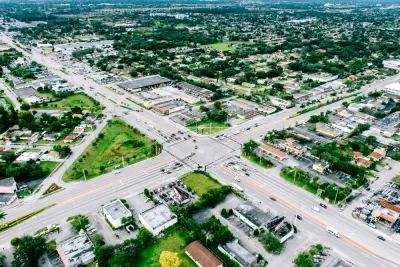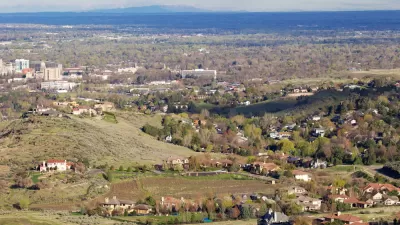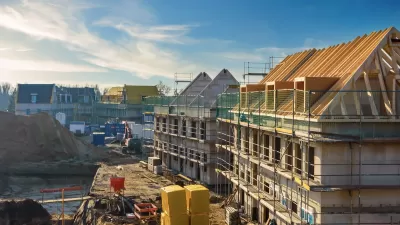One quick way to build sprawl.

The Florida State Legislature is responding to ongoing growth pressure by making it easier to build sprawling development.
HB 439, under consideration by the Florida Legislature would change the legal definition of “sprawl,” along with other key terms of land use regulation, such as “intensity” and “density.”
According to an article by Ben Abramson for Strong Towns, the changes are designed to “remove existing guardrails on a certain type of development in Florida.”
So, for example, the definition of sprawl would be changed from ‘a development pattern characterized by low-density, automobile-dependent development with either a single use or multiple uses that are not functionally related, requiring the extension of public facilities and services in an inefficient manner’ to ‘an unplanned development pattern.’
“The definition of ‘intensity’ would omit existing language that considers ‘the measurement of the use of or demand on natural resources, and the measurement of the use of or demand on facilities and services,’ and henceforth be ‘expressed in square feet per unit of land,’” according to Abramson’s explanation. “A redefining of ‘density’ would replace references to people, residents, or employees with ‘dwelling unit per acre.’”
Strong Towns’ Director of Community Action Edward Erfurt is quoted in the article saying that the legislation ‘knocks the wind out of the definition by leveling the playing field for all development to be equal.’
FULL STORY: Don’t Like Sprawl? Just Call It Something Else.

Maui's Vacation Rental Debate Turns Ugly
Verbal attacks, misinformation campaigns and fistfights plague a high-stakes debate to convert thousands of vacation rentals into long-term housing.

Planetizen Federal Action Tracker
A weekly monitor of how Trump’s orders and actions are impacting planners and planning in America.

In Urban Planning, AI Prompting Could be the New Design Thinking
Creativity has long been key to great urban design. What if we see AI as our new creative partner?

How Trump's HUD Budget Proposal Would Harm Homelessness Response
Experts say the change to the HUD budget would make it more difficult to identify people who are homeless and connect them with services, and to prevent homelessness.

The Vast Potential of the Right-of-Way
One writer argues that the space between two building faces is the most important element of the built environment.

Florida Seniors Face Rising Homelessness Risk
High housing costs are pushing more seniors, many of them on a fixed income, into homelessness.
Urban Design for Planners 1: Software Tools
This six-course series explores essential urban design concepts using open source software and equips planners with the tools they need to participate fully in the urban design process.
Planning for Universal Design
Learn the tools for implementing Universal Design in planning regulations.
Gallatin County Department of Planning & Community Development
Heyer Gruel & Associates PA
JM Goldson LLC
City of Camden Redevelopment Agency
City of Astoria
Transportation Research & Education Center (TREC) at Portland State University
Jefferson Parish Government
Camden Redevelopment Agency
City of Claremont





























